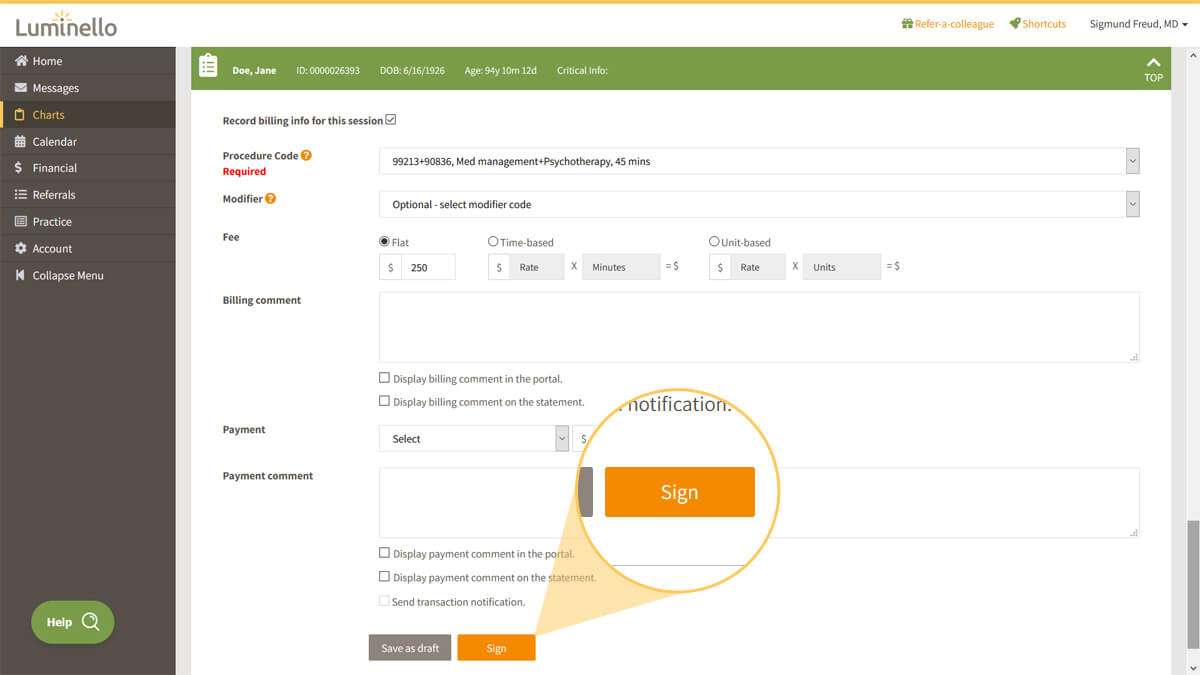If you have borderline personality disorder, you have probably heard of both cognitive-behavioral therapy and dialectical behavior therapy. Are these modes of treatment different or simply variations of each other? Let’s take a closer look at these types of behavioral therapies and how they are related.
Cognitive Behavioral Therapy
Cognitive-behavioral therapy, or CBT, is a form of therapy that aims to restructure and change the way a person thinks and behaves. Whether or not this therapy is beneficial depends strongly on the relationship between the individual and their therapist. The individual’s willingness to make a change is also a crucial factor.
Examples of techniques used by a cognitive-behavioral therapist include cognitive restructuring and behavioral changes, like reducing self-defeating behaviors and learning how to respond to problems in a healthy, adaptive manner. In cognitive restructuring, a patient is taught to identify negative reactive thoughts and modify them.
Dialectical Behavior Therapy
Dialectical behavioral therapy, or DBT, is a modified type of CBT that was uniquely developed to treat borderline personality disorder. This approach is called “dialectical” because it involves the interaction of two conflicting ideas, which are that improving the symptoms of BPD involves both acceptance and change.
It focuses on skills like mindfulness or living in the present, regulating emotions, tolerating distress, and effectively managing relationships with others. DBT is the only empirically supported treatment for borderline personality disorder.
DBT is composed of four elements that the individual and therapist usually work on over a year or more:
- Individual DBT therapy, which uses techniques like cognitive restructure and exposure to change behavior and improve quality of life.
- Group therapy, which uses skills training to teach patients how to respond well to difficult problems or situations.
- Phone calls, which focus on applying learned skills to life outside of therapy.
- Weekly consultation meetings among the DBT therapists, which offer a means of support for the therapists and to ensure they are following the DBT treatment model.
This type of therapy focuses on some of the common symptoms of BPD including impulsivity, exaggerated mood changes, unstable relationships, poor sense of self, and the fear of abandonment. DBT also helps people with BPD work on skills such as being able to tolerate distress, regulating emotions, and effective interpersonal behavior.
One major focus on DBT is to help people learn how to deal with powerful emotions and learn new ways of coping with strong feelings without resorting to unhealthy coping mechanisms. Distress tolerance, for example, centers on helping people recognize and accept painful feelings without engaging in harmful behaviors like self-harm.
How to Decide Which BPD Treatment Is Right for You
If you have borderline personality disorder, there are treatments that can help you manage your condition. Please speak with your doctor about finding the right therapist and treatment model for you so you can feel better and improve your quality of life.
Borderline Personality Disorder Discussion Guide
Get our printable guide to help you ask the right questions at your next doctor’s appointment.
:max_bytes(150000):strip_icc()/illo_Doctor-discussion-guide-mind-08-5c60ad2a46e0fb000158767e.png)
Download PDF
Differences Between Dialectical Behavioral Therapy and Cognitive Behavioral Therapy
DBT is simply a modified form of CBT that uses traditional cognitive-behavioral techniques, but also implements other skills like mindfulness, acceptance, and tolerating distress.
CBT
-
Helps patients change how they think/behave
-
Patients learn how to manage negative emotions
-
Can be used in the treatment of many disorders
DBT
-
A type of cognitive-behavioral therapy
-
Incorporates other skills (e.g., mindfulness)
-
Specifically treats borderline personality disorder
The good news is that DBT has been found to be considerably more effective in treating people with borderline personality disorder.
Dialectical behavioral therapy is recommended as a first-line treatment for borderline personality disorder and has been shown to reduce the need for medical care and medications by as much as 90%.
It’s interesting to note that some cognitive-behavioral therapists incorporate certain elements of the DBT model into their treatment sessions. Also, other forms of CBT have developed that use the elements of DBT. For instance, mindfulness-based cognitive therapy utilizes traditional cognitive-behavioral techniques with mindfulness to treat depression.
The Best Online Therapy Programs
We’ve tried, tested and written unbiased reviews of the best online therapy programs including Talkspace, Betterhelp, and Regain.
Examples of CBT for Borderline Personality Disorder
CBT for BPD is versatile and can be tailored to an individual’s unique situation. Given the variability of CBT techniques and the ways in which the modality can help, it can be used as a framework for adolescents and adults, to help them manage relationship issues as well as more serious thoughts of self-harm.
CBT for BPD Relationship Issues
CBT has been shown to be effective in managing BPD in relationships. In a study, it revealed that those in CBT treatment for a year had better outcomes. CBT helped these couples reduce feelings of hopelessness and impulsivity, a big factor of BPD behavior.8
CBT for BPD & Suicide
Self-harm thoughts and behaviors are common symptoms for people struggling with BPD, and is often very discouraging for those dealing with it. CBT has been shown to help individuals with BPD who have suicidal thoughts. In these cases, CBT works by uncovering negative inner monologues to improve self-esteem and self-worth. Evidence shows that CBT has been helpful in reducing self-harm behaviors and beliefs within months of treatment.9
CBT for BPD in Adolescents
Parental involvement in family CBT can be helpful for treatment for adolescents with BPD. This type of therapy also shows improved outcomes for parents and their ability to provide consistency and stability for the adolescent during treatment. 10
Is CBT Effective in Treating Borderline Personality Disorder?
CBT has been shown to be extremely effective at treating BPD. It manages symptoms and is also helpful for children, parents, and relationship partners impacted by an individual’s BPD diagnosis.
CBT is very effective in treating BPD by:8,9,10,11,12
- Helping couples with a partner who has BPD work through relationship issues by reducing hopelessness and impulse behaviors.
- Helping individuals reduce suicidal thoughts and behaviors by working to unlearn negative thought processes and relearn positive ways of managing difficult emotions.
- Helping children with BPD symptoms by providing psychoeducation about how thoughts become actions, and helping parents by integrating their support in sessions to improve overall family functioning and cohesion.
- Helping those with BPD who are severely struggling with overall functioning. CBT for this population of individuals with BPD showed improvement in psychosocial functioning.
- Helping those dealing with eating disorders with a diagnosis of BPD. Those with an eating disorder and BPD showed lower dysfunctional behavior around emotions, lower feelings of depression and lower dysfunctional eating behaviors.
Finding a Cognitive Behavioral Therapist
“CBT involves learning new skills to apply to negative thoughts and problematic behavioral urges. Learning any new skill requires practice,” says Sauer-Zavala. “CBT therapists will help you apply these skills to the situations their patients bring to session – and patients need to practice if they want to see improvement outside of their 50 minute sessions.”
One great way to find a therapist is by searching an online therapist directory to find a therapist. All licensed therapists are equipped to help people struggling with mental health issues such as BPD and may have formal training in CBT as it is a leading therapeutic modality. Reading reviews and looking at clinician bios to understand the scope of their practice can give you an idea of whether their experience suits your situation. Many therapists offer a free phone consultation to help you know if you’ll be a good fit.
Another way to locate a therapist is by referral, which can come from a trusted loved one or a physician. Healthcare providers often have access to a network of other providers who can be helpful. Going through your physician or specialist is also a great way to keep them in the loop about any treatment options or trauma experienced.
How Much Does CBT for BPD Cost?
In some cases, when BPD is diagnosed by a licensed professional, CBT can be covered by health insurance. There is usually a copay for mental health services with most insurance providers, which can range from $40 to upwards of $100. Looking at “in-network” providers might be able to help with the out-of-pocket costs with copays. In situations where health insurance does not cover CBT, sessions can range from $60-$200 per hour per session. It’s important to consider therapists and practices which may offer sliding scale prices for sessions.
Final Thoughts
What you’re struggling with may be unique to you, but you’re not alone. If you are dealing with BPD, the first step is to give yourself some compassion and reach out to a therapist. Talking to a therapist who specializes in this issue can make a big difference in how you feel, how you’re able to cope and what you’re able to do long term to manage and heal. Together, you and your therapist can develop a plan to get you through this time and help you grow into a more fulfilled version of yourself.
Cognitive-behavioral treatments are the cornerstone of therapy for people with borderline personality disorder. Different types of cognitive-behavioral therapy, including two unique types that are used to help those specifically with BPD, can help people adopt healthy coping skills and achieve a good quality of life.
What Is Cognitive-Behavioral Therapy?
Cognitive-behavioral therapy (CBT) is a type of psychotherapy that targets the “cognitive” (thinking-related) and “behavioral” (action-related) aspects of a mental health condition.
The goal of CBT is to help you to reduce your symptoms by changing the way you think about or interpret situations, as well as the actions that you take in your daily life.
What to Expect From Cognitive-Behavioral Therapy
CBT is very focused on the present, meaning that you do very little talking about your past. While you may talk to your therapist about how you came to think or behave the way you do, most of the therapy is focused on how your current ways of thinking/acting are related to your symptoms, and how to change these patterns.
CBT is also fairly directive, meaning that your therapist will often take an active role in your therapy session, giving you direct advice and guidance.
Because cognitive behavioral therapists operate under the assumption that your symptoms are in part related to patterns of thinking and behaving that you have learned over the course of many years, they believe that one or two hours of therapy each week will not produce any major change.
For this reason, most CBT therapists assign homework—they want you to work to change the patterns outside of the therapy session. So don’t be surprised if you leave your CBT therapy session with handouts to read and homework sheets to complete.
CBT for BPD
While the basic principles of CBT can be helpful for people with borderline personality disorder (BPD), some experts have noted that the disorder requires specialized CBT techniques. Two unique cognitive-behavioral therapies that have been designed specifically for BPD are:
Both dialectical behavior therapy (DBT) and schema-focused therapy have been shown to be effective in reducing BPD symptoms. DBT consists of both individual and group therapy sessions, as well as phone coaching sessions, where a person with BPD focuses on behavioral skills like:
- Achieving mindfulness—paying attention to the present or living in the moment
- Regulating emotions
- Tolerating distress or conflict
- Navigating relationships with other people
- Achieving motivation to avoid unhealthy coping skills, like self-harm
Schema-focused therapy is based on the idea that personality disorders like BPD develop as a result of maladaptive thoughts or behaviors early on in life. People then develop unhealthy coping skills, like avoidance, to avoid triggering those thoughts or behaviors.
Schema-focused therapy is not like traditional cognitive-behavioral therapy in that it’s more flexible and attuned to a person’s emotions. It also requires a longer treatment period, ranging from one to four years.
Finding a Cognitive Behavioral Therapist
While CBT has been around for decades, it can be difficult to find a therapist who has been trained in this approach. If you are interested in finding a CBT therapist in your area, try the Association for Behavioral and Cognitive Therapy’s Find-a-Therapist Directory.
If you are interested in finding a Dialectical Behavior therapist, try the Behavioral Tech Clinical Resources Directory. It’s also a good idea to speak with your primary doctor or psychiatrist for a referral to ensure this is the right treatment plan for you.




